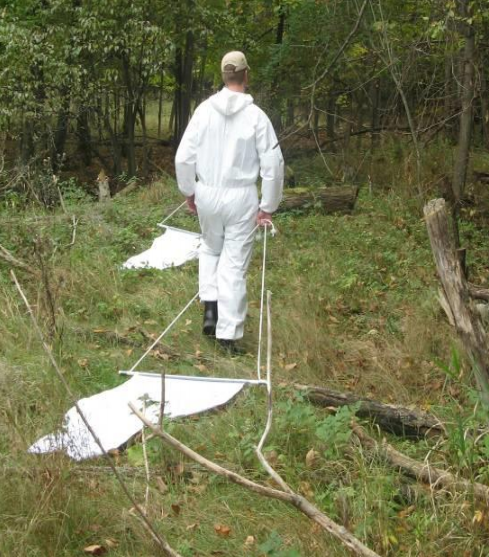THUNDER BAY — After capturing a blacklegged tick this spring by dragging a cloth sheet on the ground—a first for the Thunder Bay area—the district health unit has now been able to catch four more of the insects by the same method.
This increases the chances that Public Health Ontario will eventually designate the district as a Lyme disease risk area.
Currently, the designation has only been made in parts of southern Ontario and pockets of the Rainy River and Kenora districts.
Blacklegged ticks can transmit the bacteria that causes the debilitating disease.
Health officials track them through active surveillance and passive surveillance.
Active surveillance involves dragging a white sheet through areas where ticks are likely to be present.
Three of the five captured this way recently by a health unit student worker were found in the Belrose Road area. The others were caught on a trail near Mountain Road and on the Boreal Road west of Highway 590.
All have been sent to the National Microbiology Lab in Winnipeg for testing for Lyme disease.
Ken Deacon, coordinator of the Thunder Bay District Health Unit's vector-borne disease program, says if a blacklegged tick is also captured during active surveillance this autumn, "then we will officially change our risk status from an area of low risk to provincial recognition that the ticks are established here," meaning there is an elevated danger of getting Lyme disease.
In addition to the five ticks caught on the white sheets, under passive surveillance insects continue to be turned in at the health unit by members of the public who have found them on their bodies or on their pets.
Over the last 11 years, 7 per cent of blacklegged ticks submitted to the TBDHU through passive surveillance have tested positive for the bacteria that can cause Lyme disease.
